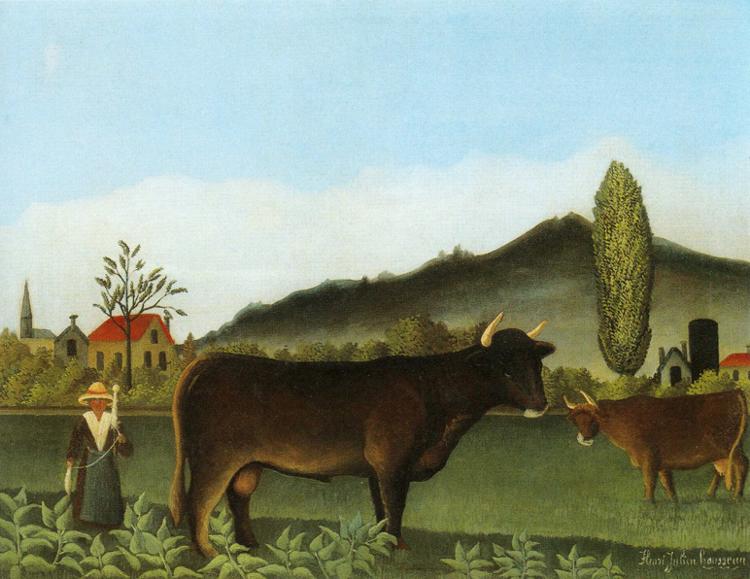It is the gift of crystallizing inner experience that differentiates an artist from a mere craftsman or technician, and sometimes this crystallization takes place through the chemistry of some power unwilled or even unsuspected by the painter….
The most conspicuous manifestation of this power occurs in the art of Henri Rousseau, usually called Douanier Rousseau in reference to his occupation as a customs clerk. He would today be termed a hobby painter. Rousseau lacked the professional ambitions of the usual sort, yet he seems never to have doubted for a moment that he was a great painter.

—Rousseau’s work was solely unique and personal as his reality and imagination collided into one. Wild jungle landscapes with exotic animals and isolated seductive figures are striking with their vibrant colors and textures, defined shapes, and unusual juxtapositions. Portrayal of the jungle, animals, and plants became a reoccurring theme or motif in Rousseau’s fantastic art, thus becoming an important and dominant characteristic of his work. Each image glows from within exuding a sense of enigma and the supernatural. What’s most ironic about Rousseau’s artwork is that he never saw a jungle or traveled outside of France. Rousseau was highly revered by the Surrealists, who regarded him as their forerunner.—click image for source…
Rousseau was an extremely simple man in his origins and in his way of life, as it was, he possessed a near next to incredible naivete that broached the childlike in its purity. What he wrote about his paintings was often totally at odds with the impression they make. He would describe as a genre scene a picture full of mystery and enchantment, a quality that was particularly his own as if he was living a reality on a different realm where the standards of banality were beyond our imagination.
On the surface, Rousseau was one of the thousands of “Sunday painters” who create works in their spare time for relaxation and therapeutic reasons. And his work bears the mark of the conscientious but awkwardly skilled novice or intermediate. In his Landscape with Cattle, we see them all- the flatness of forms intended to appear round, the labored and uncoordinated detail, and a meticulous but unpolished finish. There is stiffness, inaccuracies of proportion, faulty perspective and a trite subject permeated by technical limitations. But as one one of life’s little mysteries it actually works in some incomprehensible way.
“Cattle” has decorative flair, a pleasant but shallow virtue, but importantly, and inexplicably it is emotionally charged with an air of enchantment. The flat rigid objects are transfixed within some magical suspension of time. We are conveyed within a region beyond time and beyond space from which every distracting banality has been distilled. A kind of world beyond kitsch. Rousseau could not as much as copy a postcard without transforming its prosaic realism into his own distinctive, signature unreality.





 COMMENTS
COMMENTS